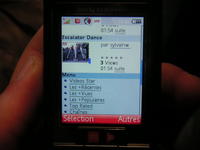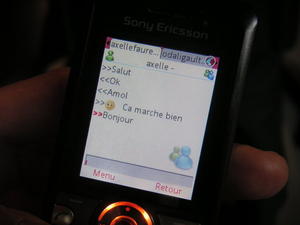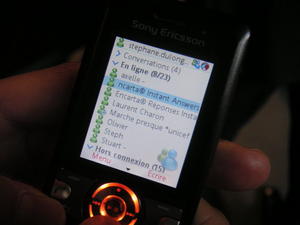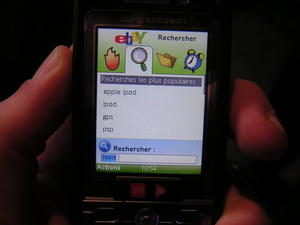Mobile Web 2.0 in the real world : SFR (Vodafone France) new offer (YouTube, DailyMotion, MSN, MySpace, eBay, Google Maps)
Thomas Menguy | July 12, 2007So here it comes: a portfolio of web services pushed by an operator, SFR, the french Vodafone. Check for details here (sorry in french):Six géants d’Internet s’associent SFR en illimité.
Here is a quick summary:
SFR is launching a best of web offer, with 6 top of the line services accessible through its Vodafone Live portal.
- DailyMotion, accessible through a java application that allows a user to send its own videos: it has been done in 2 Months by SilverBlack Wireless (formerly french Cellcast Interactif). Before the end of the year a richer application (java also?) will be available (comments, etc). DailyMotion has signed a 6 months exclusivity with Vodafone. . User pays “only” for bandwidth                               Â


- YoutTube: certainly accessible through its mobile version (http://m.youtube.com). No Vodafone exclusivity. User pays “only” for bandwidth
- Windows Live Messenger, available through the Miyowa solution (server + client midlet): 4 euros per month for unlimited use (!!) or cost is equivalent to one SMS by message sent (!!!). seems expensive but Bouygues has 80000 subscribers for the same service, little cash cow?
 .                                                                                                                                                               Â
.                                                                                                                                                                

- eBay: eBay Mobile by Streamezzo (through their java client): free access (apart from connexion costs), products search, possibility to bid, etc. One month exclusivity to sfr for this mobile access. Â Â Â Â Â Â Â Â Â Â Â Â Â Â Â Â Â Â Â Â Â Â Â Â Â Â Â Â Â Â Â Â Â Â Â Â Â


- Google Maps: well you know it already
- MySpace: Mobile version access (WAP/simple web or java app??) … but with a business model like done in the US: access to messages, music and video…for 3 euros per months or 0.5 euros per day of use. In the US (helio and AT&T I think have deployed the service), there were 200k users in 6weeks at 3$ per month, 2$ for MySpace, 1$ for the carrier (The main site has an estimated 55 million users, and MySpace.com is the second-most-viewed-website in the U.S. just behind Yahoo and ahead of Google — and accounts for 12 percent of online advertising).
Here is the pricing model of sfr for bandwidth:
- A “per data session” of 2 Mo at 0.5 euros, for the access to those services
- For the first 50 000 :9.90 euros per months for unlimited access to those best of web services + 25 Mo of portal DATA+ unlimited email
- Web services are here, rushing to the mobile…and can propose a non free business model with no advertisement with no complexes: people seems ready to pay!
- MIDP, MIDP, MIDP : as it is the only way today to deploy massively services so it is the only viable technology….today.
- In at least 3 of this 6 cases, a third party (Miyowa, SBW, Streamezzo) has been involved/in charge of the Mobile development and strategy (even in the MS case!) => Mobility is still an “expert only” area, new actors may have a role here.
- Vodafone is no more willing to redefine itself the user experience of those services, it (at last!) leaves it to the service providers themselves…it is perhaps time for the Andreas Container Projects? to help those kind of deployment, with no to little OEM involvement?
- For the others, 2 plans Vodafone Live +unlimited emails with 5 Mo or 25 Mo of additional data (off portal??) for 5 euros and 9.90 euros respectively per month
So some quick comments:
Any comments on those last statements?













